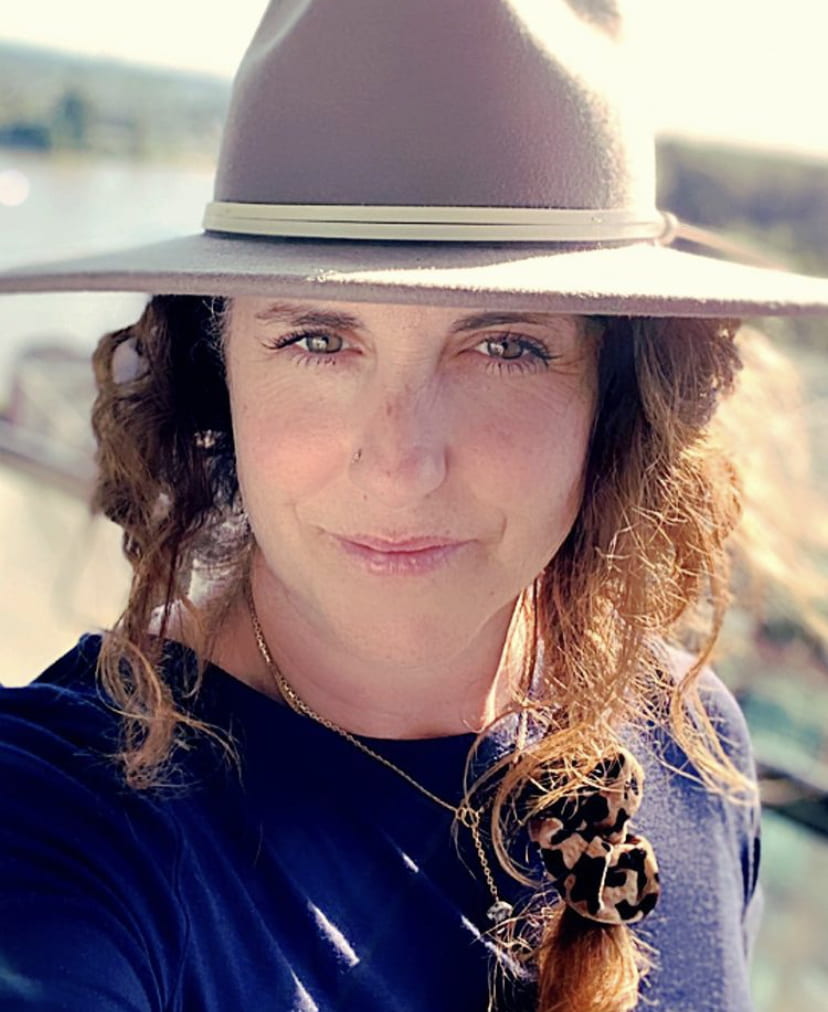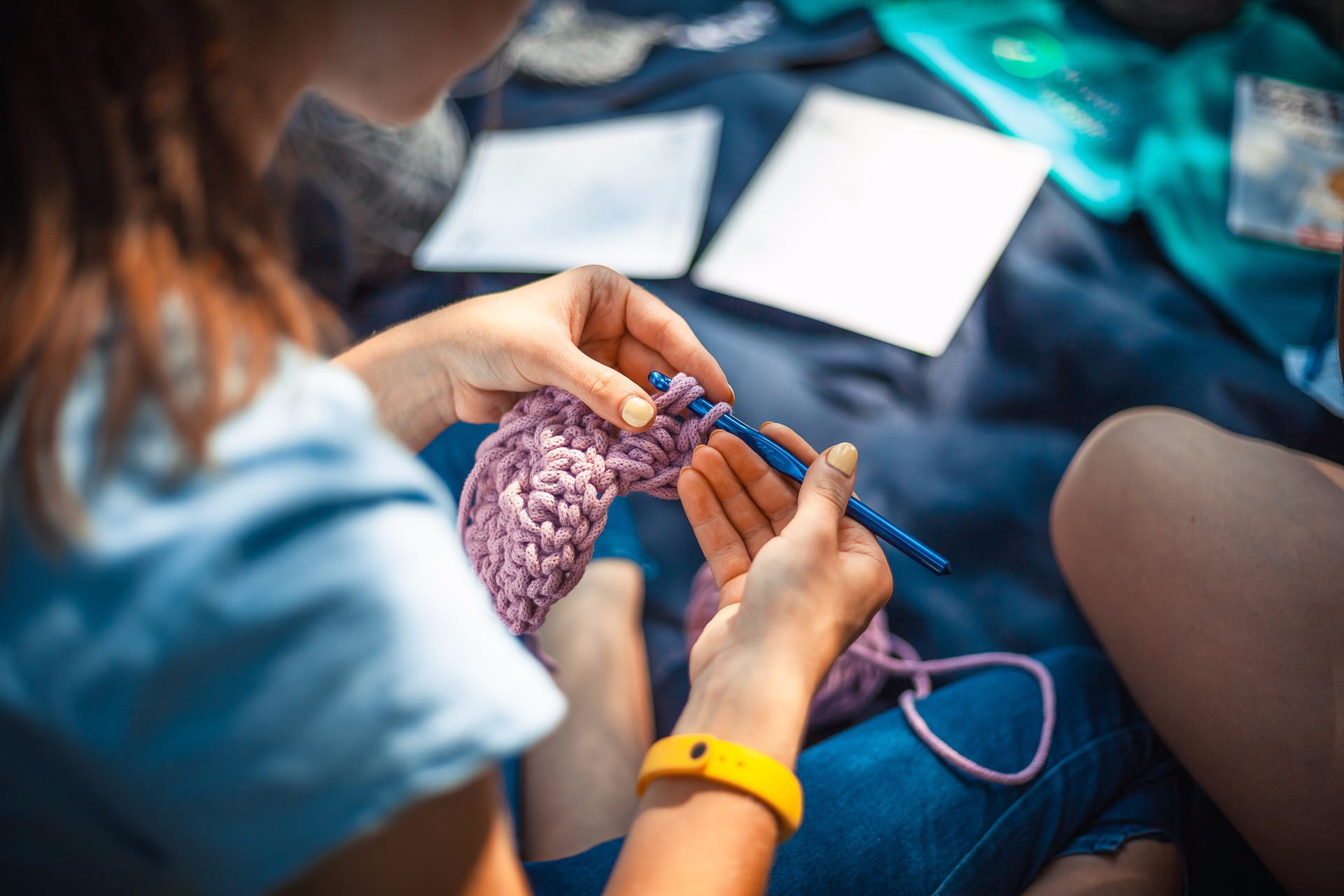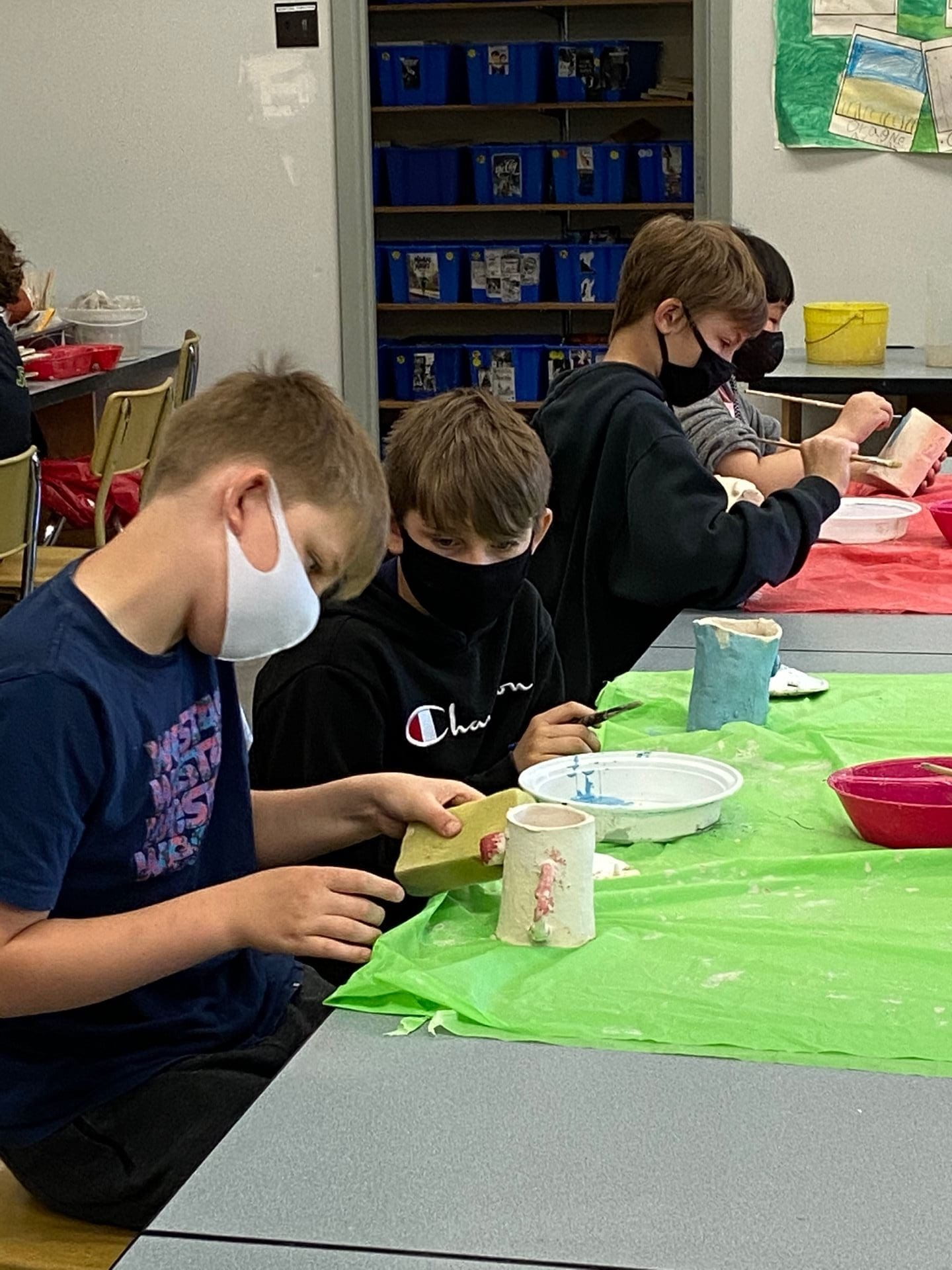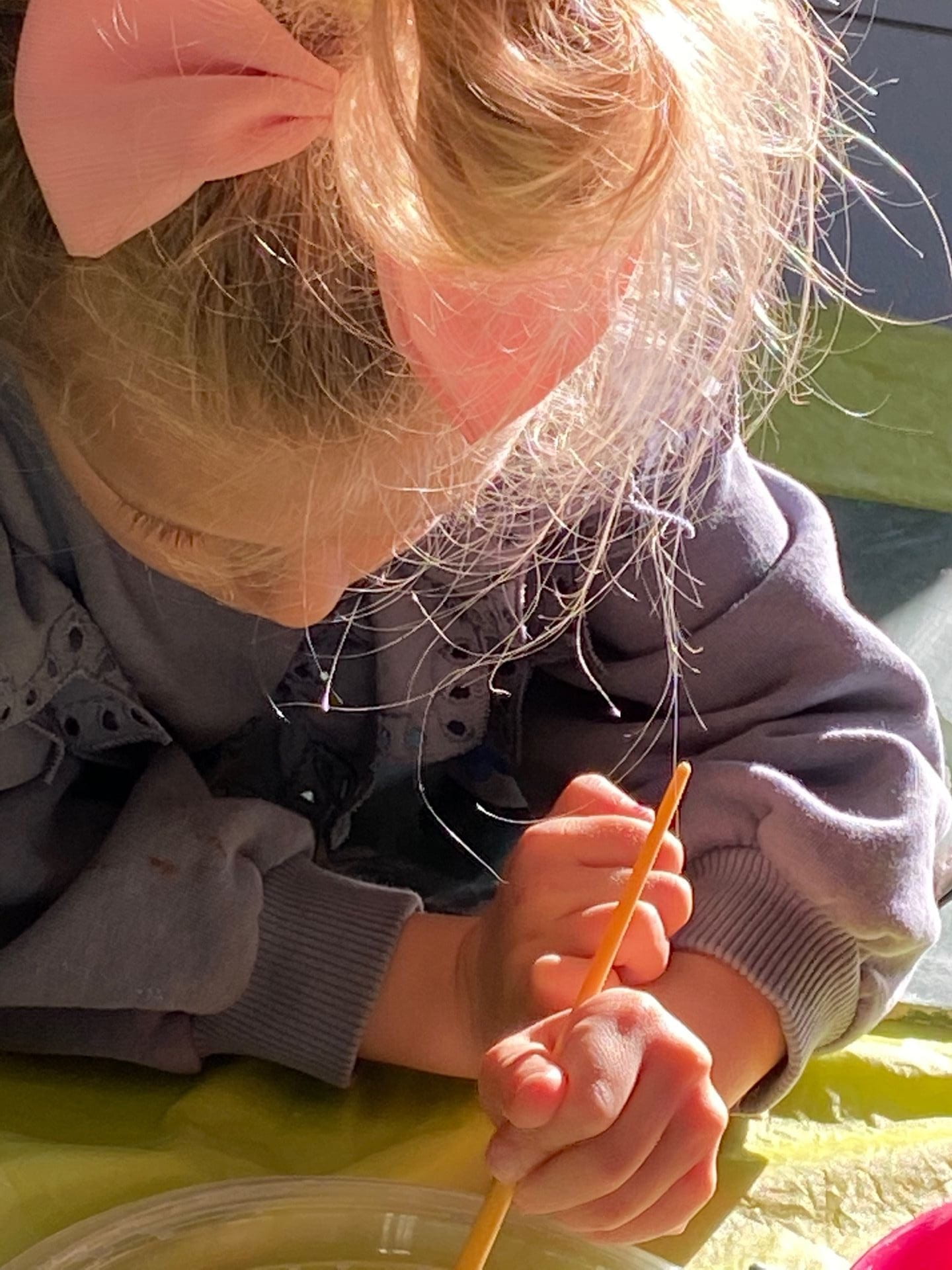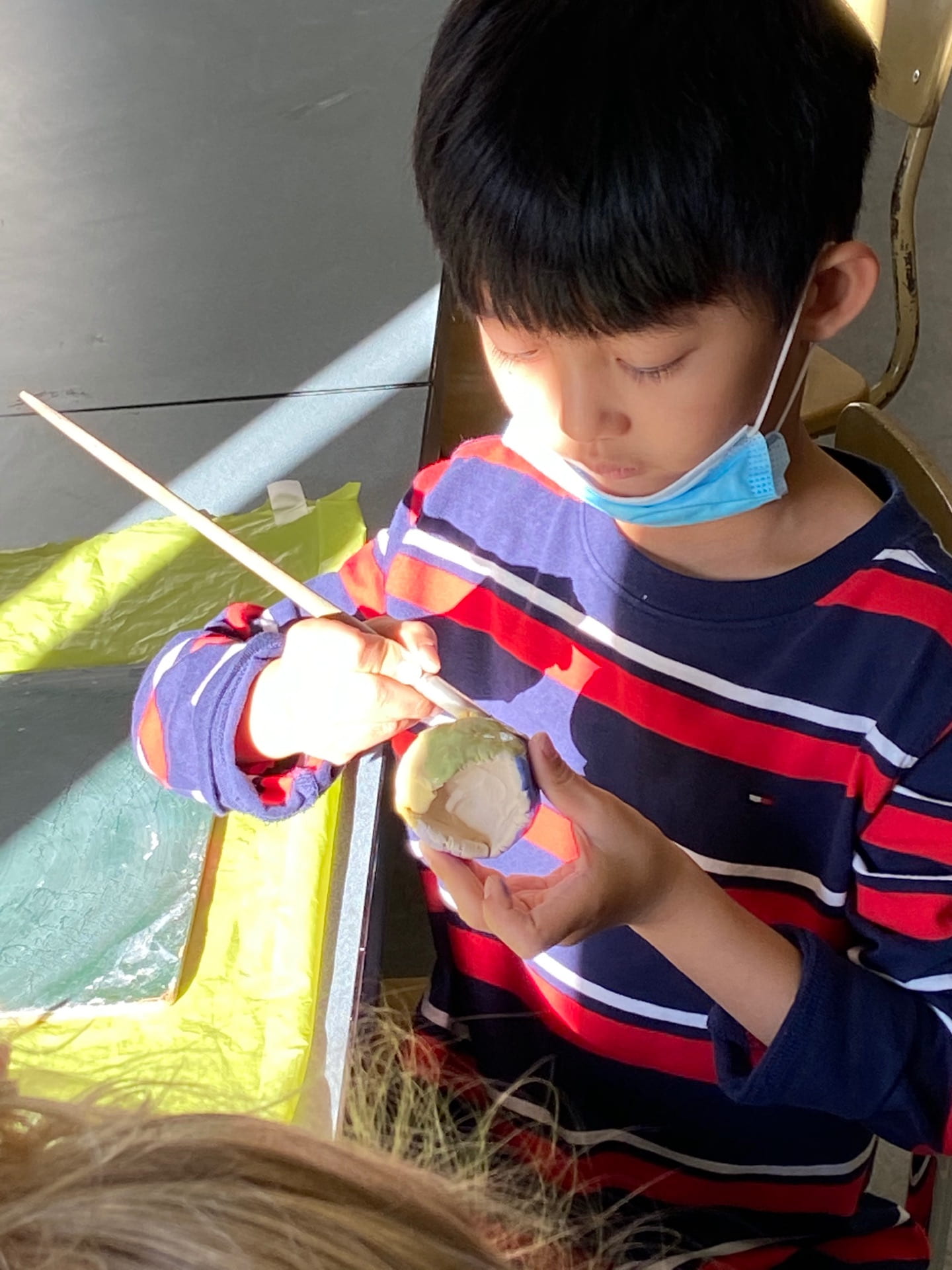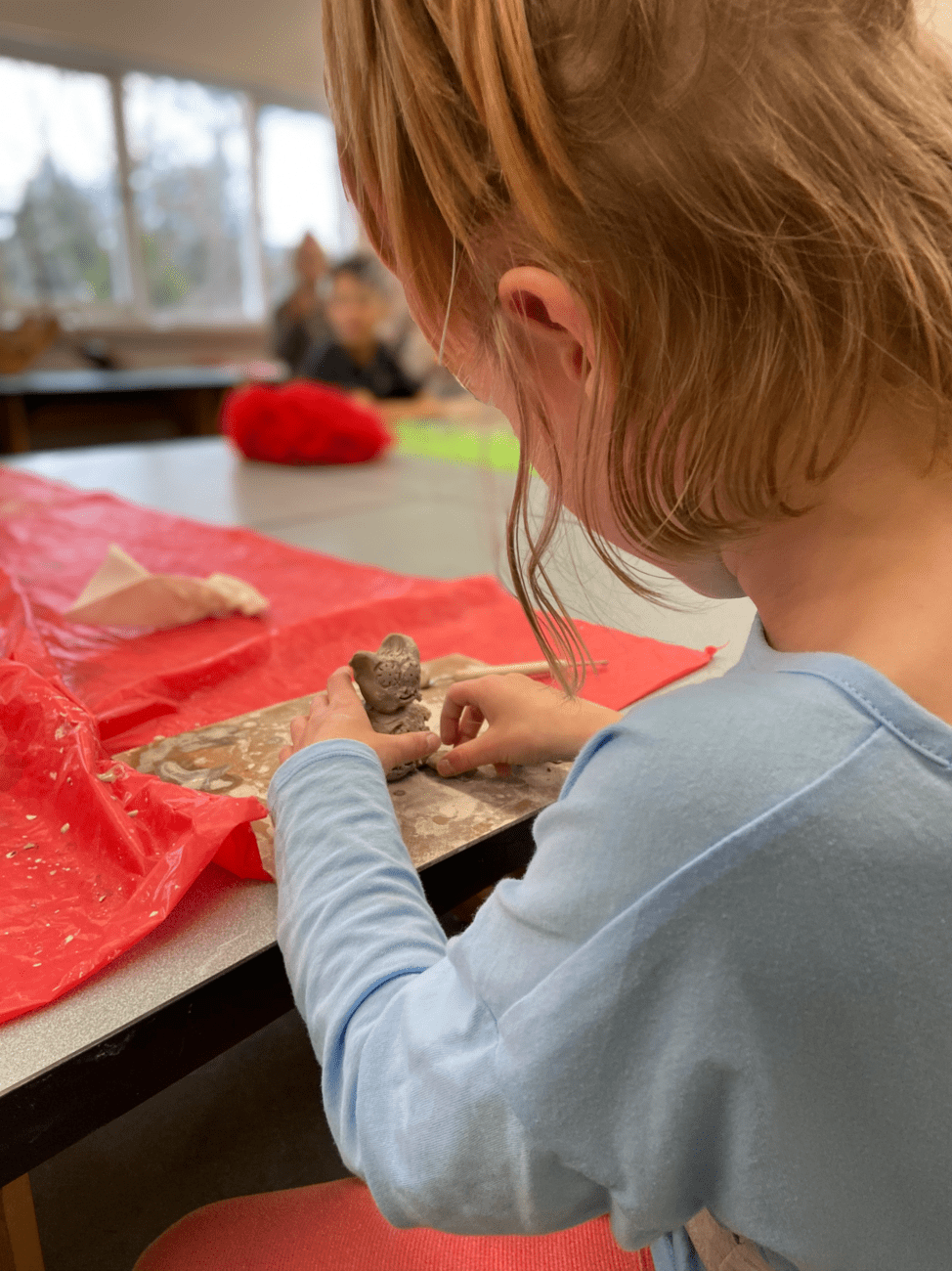Jessica A. Elkin, B.Ed, Master’s Student in Imaginative Education at SFU, Teacher-Librarian with the Delta School District who loves stories, getting messy, and having fun.
I come from a long line of makers. My grandmother was a rug hooker who hand-dyed and cut her wool, my mother is a prolific quilter, and I have a passion for beadwork. I learned a great deal at the knees of my mother and grandmother. These patient and loving teachers shaped the way I am as a parent and educator. The wonder I feel when I turn raw materials into beautiful objects is matched only by the feeling I get when I teach others to do the same. I, fortunately, have found myself in a position to teach my students about the things I am passionate about. Still, I see too many colleagues trudging through their days void of the enthusiasm for learning they certainly once possessed.
But, what if teachers were offered the space to “let wonder shape some part (Piersol, 2013, p. 36)” of their teaching? What if educators were encouraged to set the curriculum aside for a day, or a week, and take a deep dive into a topic they “know deeply (Berliner, 2013, p. 170)”?
Relocating the wonder that drove them to learn the topics they are passionate about and make space to teach it to students could be the ‘self-care’ we talk about in education but so rarely seek out.
In David Berliner’s article, “Opportunity to Teach: The Joy of Teaching What You Know Deeply, Find Fascinating, and Want to Share” (2013), he posits that allowing educators the space to teach topics they are knowledgeable and passionate about will open opportunities for greater student engagement and emotional connections that could potentially be more valuable than prescribed curricular outcomes. When I read this article, I thought of the teachers I had whose enthusiasm and joy has stayed with me. Mr. Bigalky could coax ‘art’ out of even the most reluctant and make you feel like you just produced a masterpiece or Mr. Atkinson’s unbridled joy over fetal pig dissection. These ‘wonder-full’ educators drew me in and allowed me to share in the sense of wonder they felt for these topics. The memories of these wonder-full educators have stayed with me, but I do not remember who taught me how to conjugate verbs or the rules of volleyball. These were probably competent teachers following the curriculum in the way in which they were instructed. Still, I hazard a guess that had they been given “the opportunity to teach what they love and what they find wonderful (Piersol, 2013, p. 42)” I would have at least remembered who they were.
 Being remembered is perhaps not the goal of every educator, but, as Berliner contends, we learn more from experts than just the topic of their expertise. We learn their “habits of mind, ways of thinking, forms of argument (2013, p. 173)” and find the enthusiasm they have for their field of expertise inspirational. When students are “exposed… to a teacher who has the opportunity to teach what they love and what they find wonderful (2013, p. 182)” they connect emotionally to that topic. Students become happier, teachers develop a sense of pride, and schools become welcoming communities of learners.
Being remembered is perhaps not the goal of every educator, but, as Berliner contends, we learn more from experts than just the topic of their expertise. We learn their “habits of mind, ways of thinking, forms of argument (2013, p. 173)” and find the enthusiasm they have for their field of expertise inspirational. When students are “exposed… to a teacher who has the opportunity to teach what they love and what they find wonderful (2013, p. 182)” they connect emotionally to that topic. Students become happier, teachers develop a sense of pride, and schools become welcoming communities of learners.
This is the position I found myself on the first day of work at my current job as a Teacher-Librarian. My Principal and I were standing in the Library talking about the vision for the future of the Library.She said, “I see a vibrant, colourful place that is the hub of the school. I see collaboration, innovation, and a place students feel truly welcome.” I was given the opportunity to create a wonder-full space and create a program that included teaching my students to be makers. The time spent with my mom and grandmother, learning fabric and needlework skills, cooking, gardening, patience, a love of the aesthetic and the cathartic value in creating things, finally intersected with my profession under the umbrella of ADST (Applied, Design, Skills, and Technology).
Every Friday, I “teach what (I) know deeply and love to teach (Berliner, 2013, p. 179)” and my students respond. They love the Library, but their excitement and enthusiasm for ADST is overwhelming and proven through words and actions. I rarely have behaviour problems, parents stop me regularly to tell me how much their child loves ADST, and students cannot wait until the next session. I do not do any reporting or give marks for projects; it is purely experiential. Smiles measure success along with the many “I can’t wait for next week”s. Fridays are tiring. I go home covered in clay or flour, or with sore eyes from threading what feels like a hundred needles. But I go home full of wonder at the challenges I gave my students and how they rose to them and with the energy to start all over again the following week. Work and self-care intersected when I “let wonder shape (Piersol, 2013, p. 36)” part of my practice.
I have continued to pass along the maker tradition to my children, both of whom have taken up sewing and always have projects on the go. Since they could hold scissors or a paintbrush, we have crafted together, and they have spent hours with their grandma, sewing, cooking or gardening. Both have also followed their own passions; one knows a staggering amount about pop culture, and the other is a walking (riding?) bicycle encyclopedia. I feel fortunate to share the joy and wonder I feel for making things with all my “kids”, my own children and my students.
When I was allowed to include the very things that spark wonder in me into my teaching practice, I found so much more satisfaction in my job and energy to be a more effective teacher. Work became self-care, and self-care became something I no longer had to work at.
This term has become a buzzword in education; the answer often offered to solve a problem with more pieces to it than one of my mother’s quilts. But my mother makes quilts one piece of cotton at a time and creates a wondrous artefact that wraps her loved ones in comfort and joy. Allowing teachers to teach “what (they) know deeply, find fascinating, and want to share (2013)” could be the piece one needs to reignite passion in their practice and wrap their students up in wonder and possibility.
References:
Berliner, D. C. (2013). Opportunity to Teach: The Joy of Teaching What You Know Deeply, Find Fascinating, and Want to Share. In Wonder-Full Education: The Centrality of Wonder in Teaching and Learning Across the Curriculum (pp. 170–184). Taylor & Francis Group.
Piersol, L. (2013). Our Hearts Leap Up: Awakening Wonder within the classroom. In Wonder-Full Education: The Centrality of Wonder in Teaching and Learning Across the Curriculum (p. 462). Taylor & Francis Group.

